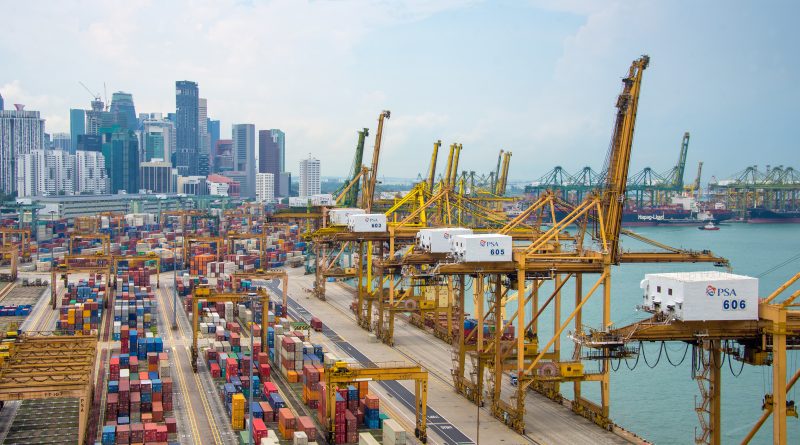Surging Shipping Delays at Singapore Port
The Port of Singapore, a vital hub in the global supply chain, is currently experiencing significant congestion and delays. This surge in shipping delays has far-reaching implications, affecting not only regional trade but also global markets. As one of the world’s busiest ports, any disruption in Singapore’s operations can have a domino effect on international logistics and commerce.
Causes of the Surge in Shipping Delays
Several factors have contributed to the current congestion at the Port of Singapore. One primary reason is the increased cargo volumes. In the first half of 2024, PSA Singapore reported a 7% increase in container volumes compared to the same period in 2023. This surge is partly driven by companies rushing to secure goods before the implementation of new tariffs by the U.S. on Chinese products, which has led to a spike in shipping activity.
COVID-19 continues to play a significant role in these disruptions. The pandemic has resulted in frequent port closures and quarantine measures, causing ships to arrive off-schedule and creating unpredictable arrival patterns. Additionally, labor shortages have compounded these issues, as ports struggle to maintain adequate staffing levels to handle the increased volume of cargo.
Geopolitical tensions, particularly the Red Sea crisis, have also forced many ships to take longer routes around the Cape of Good Hope to avoid conflict zones. This diversion not only adds to the journey time but also leads to further congestion as ships arrive in Asia unpredictably. The resulting congestion is evident with 90% of container vessels arriving off-schedule and a significant increase in waiting times at the port.
The delays at the Port of Singapore have a cascading effect on global supply chains. Businesses worldwide are experiencing disruptions in their delivery schedules, leading to increased costs and financial strain. For instance, shipping rates have surged by up to fivefold over the past year, significantly raising the cost of goods. These increased costs are often passed on to consumers, contributing to inflationary pressures.
Industries that rely on timely shipments, such as manufacturing and retail, are particularly affected. Delays can lead to stock shortages and production halts, as seen with companies struggling to secure critical components and raw materials. The congestion at Singapore’s port is also putting pressure on neighboring ports, as vessels are rerouted to avoid delays, further spreading the strain across the region.
The financial implications are profound, with businesses facing increased operational costs due to extended shipping times and higher freight rates. The unpredictability of shipping schedules also complicates inventory management, leading to inefficiencies and higher operational risks.
Response and Mitigation Strategies
In response to the growing delays, the Port of Singapore has implemented several measures to mitigate the congestion. Terminal operator PSA Singapore has reactivated older facilities at the Keppel Terminal to handle the increased demand. Additionally, PSA has been working to optimize port operations through technological innovations and increased frontline capacity. These efforts have already shown some success, with average waiting times recently reduced to two days or less.
The Singaporean government, along with the Maritime and Port Authority of Singapore (MPA), is actively collaborating with international partners to ensure the smooth flow of goods through the port. This includes measures to enhance port infrastructure and improve coordination among global ports. Furthermore, PSA has introduced new protocols to manage the high concentrations of vessels arriving on certain days, aiming to distribute the workload more evenly and reduce peak congestion.
Technological advancements, such as automated cargo handling systems and real-time tracking technologies, are also playing a crucial role in improving port efficiency. These innovations help in better managing the flow of cargo and minimizing delays caused by manual processes.
Experts predict that while the current congestion may ease, long-term strategies are necessary to prevent future delays. Investing in port infrastructure, adopting advanced technologies for better cargo handling, and enhancing coordination among global ports are essential steps to ensure resilience in the supply chain. The Port of Singapore, being a pivotal node in global trade, must continuously adapt and improve to handle future challenges.
The shifting dynamics of global trade routes may also alleviate congestion. As companies seek alternative routes and ports to bypass bottlenecks, the pressure on major hubs like Singapore could decrease. However, the port’s critical role in international logistics underscores the need for ongoing improvements in efficiency and capacity management.
Long-term strategies include expanding port capacity, enhancing digital infrastructure for better cargo tracking, and fostering stronger international cooperation to streamline global logistics. By addressing these areas, Singapore can maintain its status as a leading maritime hub and ensure the smooth flow of goods across the globe.
Sources:
https://www.porttechnology.org/news/shipping-delays-surge-at-singapore-port/
